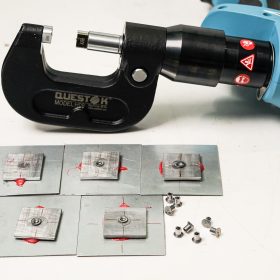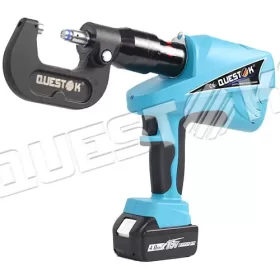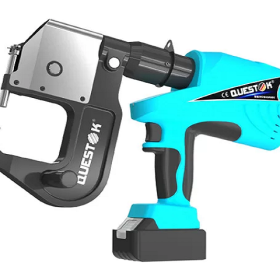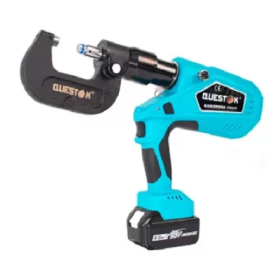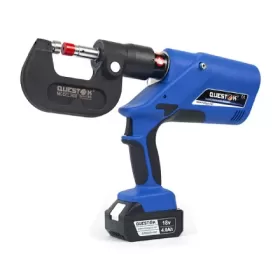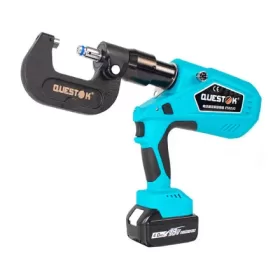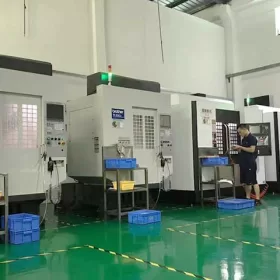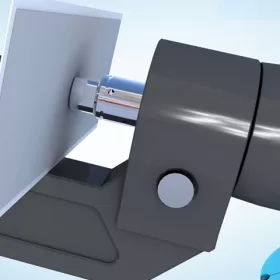Engineering Excellence- Design Considerations for Self-Riveting Machine Development
In the realm of industrial manufacturing, innovation and engineering prowess converge to create machines that redefine efficiency and precision. Among these remarkable creations, self-riveting machines stand out as a testament to engineering brilliance, offering unprecedented capabilities for joining materials seamlessly and securely. This article delves into the intricate design considerations that underpin the development of these exceptional machines, shedding light on the engineering principles that guide their creation.
Structural Integrity and Durability
Self-riveting machines encounter significant forces during operation, requiring a robust and enduring structural design. The frame and components must withstand the repeated impact of the riveting head and the vibrations generated by the process. Employing high-strength materials, such as forged steel or aluminum alloys, ensures structural integrity and durability, extending the machine’s operational lifespan. Additionally, finite element analysis (FEA) plays a crucial role in optimizing the design, minimizing stress concentrations and ensuring uniform load distribution.
Precision and Accuracy
Precision is paramount in self-riveting operations, as the quality of the joint directly affects the functionality and reliability of the assembled product. The machine’s linear and rotational systems must operate with utmost accuracy to ensure precise rivet placement and uniform joint formation. High-precision linear guides, ball screws, and servo motors form the backbone of these systems, delivering smooth and precise movement with minimal backlash. Advanced control algorithms and sensors further enhance accuracy by compensating for system variations and environmental factors.
Flexibility and Versatility
Self-riveting machines often encounter diverse riveting applications, necessitating flexibility and versatility in their design. Interchangeable riveting heads and tooling enable the machine to accommodate a wide range of rivet sizes, materials, and joint configurations. Modular design principles allow for quick and easy reconfiguration, reducing downtime and increasing the machine’s adaptability to different production requirements. Additionally, programmable control systems provide the flexibility to cater to specific riveting sequences and process parameters.
Automation and Efficiency
Automation is a key design consideration in self-riveting machine development. The machine should operate autonomously to minimize manual intervention and maximize efficiency. Advanced sensors monitor the riveting process, providing real-time feedback and enabling intelligent decision-making. Automated fault detection and troubleshooting capabilities minimize downtime and ensure uninterrupted production. Moreover, intuitive human-machine interfaces (HMIs) simplify operation, allowing for quick setup and seamless integration into automated production lines.
Safety and Reliability
Safety is of utmost importance in machine design, and self-riveting machines are no exception. Comprehensive safety features, such as light curtains, interlocks, and emergency stop buttons, protect operators from potential hazards during operation. Reliability plays a critical role in ensuring consistent performance and reducing maintenance costs. Redundancy in critical systems, such as power supplies and drive mechanisms, enhances reliability and minimizes the risk of downtime due to component failures. Regular maintenance and preventive diagnostics further extend the machine’s lifespan and ensure its continued efficiency.
By meticulously addressing these design considerations, engineers create self-riveting machines that embody engineering excellence. These machines redefine the boundaries of industrial manufacturing, enabling rapid, precise, and reliable assembly of complex structures. As technology continues to advance, the future holds even greater possibilities for these remarkable machines, promising further advancements in efficiency, flexibility, and precision in the years to come.
- Company News
- Industry News
- Tag
- Tags
-
The Advantages of Questok Rivet Guns: Precision, Efficiency, and Durability
In industrial fastening applications, the choice of tools directly impacts productivity, safety, and long-term cost-effectiveness. Questok rivet guns have emerged as a standout solution for professionals across aerospace, automotive, and construction sectors. Combining advanced engineering with user-centric design, these tools deliver unmatched performance. Below are the key advantages that make Questok rivet guns a preferred choice:
-
Rivet Gun FAQ
Rivet Gun FAQ-SPR
-
Fast Assembly and Repair With Cordless Solid Rivet Gun
Questok cordless solid rivet gun stands out as a pivotal innovation, merging portability with power to facilitate efficient and effective fastening in a myriad of applications.
-
Redifine The Role of Self-piercing Riveting Gun Machine
Self-piercing riveting adopts high-speed mechanical fastening skill that joins thin sheet materials, typically steel and aluminum alloys.
-
The Latest Innovations in Clinching Tool Design
Explore the latest innovations in clinching tool design, redefining precision, efficiency, and versatility in material joining.
-
The Application and Maintenance of Self-Piercing Rivet Guns
Delve into the applications of self-piercing rivet guns in the automotive and aerospace industries and reveal the essential maintenance practices that ensure their accuracy and efficiency.
-
Rivetless Riveting Gun for Ventilation Duct Projects
The ventilation duct rivetless gun is a tool for riveting ventilation ducts without rivets.
-
Guide to Using Self-Piercing SPR Riveting Gun
In the automotive industry, self-piercing SPR (Self-Piercing Rivet) riveting guns are commonly used for joining metal components in vehicle bodies, including BMW vehicles.
-
Rivet Gun FAQ
Rivet Gun FAQ-SPR
-
Versatile Fastening- Applications of the Handheld Rivet Gun Across Industries
In the realm of fastening, the handheld rivet gun stands as a testament to ingenuity and versatility. Its ability to effortlessly join materials with sheer strength and permanence has revolutionized manufacturing and construction processes, leaving an enduring mark on diverse industries. Aerospace: Where precision and reliability are paramount, the rivet gun shines. In aircraft assembly, […]
-
Time-Saving Tools- Speeding Up Projects with Electric Blind Rivet Guns
In the whirlwind of project deadlines, every minute counts. But what if there was a tool that could dramatically reduce assembly time, giving you an edge in the race against the clock? Enter the electric blind rivet gun: your secret weapon for lightning-fast and effortless riveting. Electric blind rivet guns are the ultimate time-savers for […]
-
Streamlining Fastening- How an Electric Blind Rivet Gun Enhances Efficiency
Introduction In the realm of manufacturing and assembly, fastening plays a crucial role in securing components and ensuring structural integrity. Traditional manual rivet guns, while reliable, are often time-consuming and labor-intensive. The advent of electric blind rivet guns has revolutionized the fastening process, significantly enhancing efficiency and productivity. This article delves into the benefits of […]
-
The Role of Automation in Electric Rivetless Clinching
Electric rivetless clinching (ERC) is a lightweight joining process that eliminates the need for rivets or other fasteners. This can lead to significant cost savings and increased production efficiency. Automation plays a critical role in ERC, enabling high-speed and high-volume production. Automated Feed Systems Automated feed systems are used to accurately position the two workpieces […]
-
Why Choose a Universal Self-Piercing Riveting Gun for Your Projects?
In the realm of construction and fabrication, riveting guns stand as indispensable tools for creating secure and robust connections. Among the various types available, universal self-piercing riveting (SPR) guns have emerged as a game-changer due to their versatility and efficiency. This article will delve into the compelling reasons why choosing a universal self-piercing riveting gun […]
-
Why Choose Stainless Steel Hollow Rivets for Your Projects?
In the world of industrial manufacturing, choosing the right fasteners for your projects is crucial for ensuring longevity and reliability. Among the many options available, stainless steel hollow rivets stand out as a superior choice for a wide range of applications. This article delves into the compelling reasons why stainless steel hollow rivets are the […]
-
Top Trends in Electric Rivetless Clinching Guns
In the realm of fastening technology, electric rivetless clinching guns have emerged as a revolutionary solution for a wide range of industrial applications. These advanced tools offer several преимущества and capabilities, revolutionizing the way businesses approach their fastening needs. Adoption of Brushless Motors Brushless motors have gained significant traction in electric rivetless clinching guns due […]
